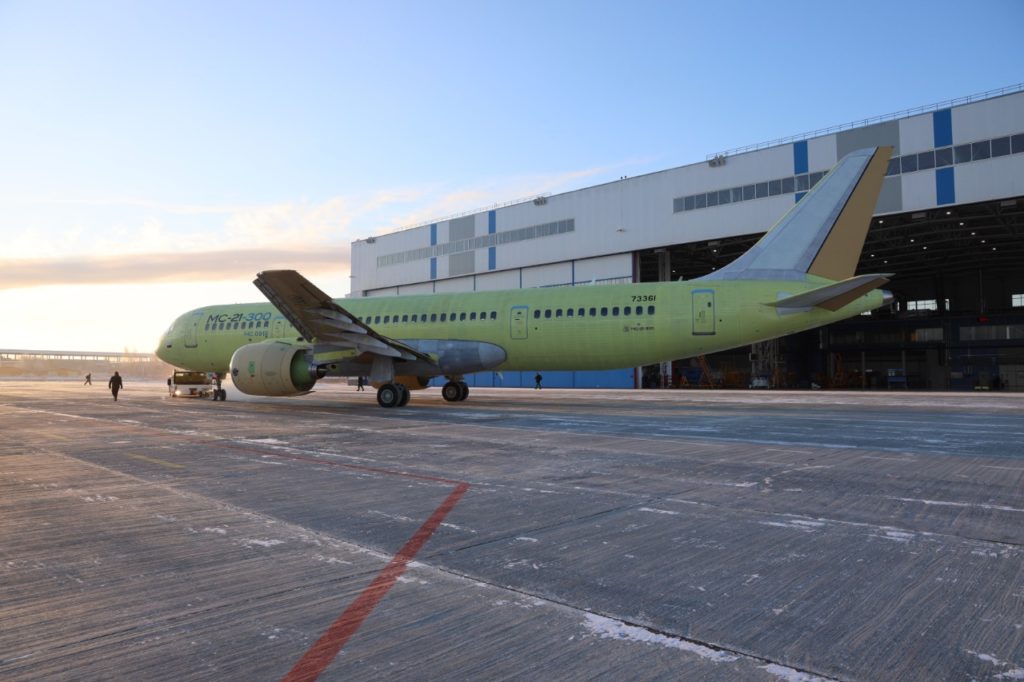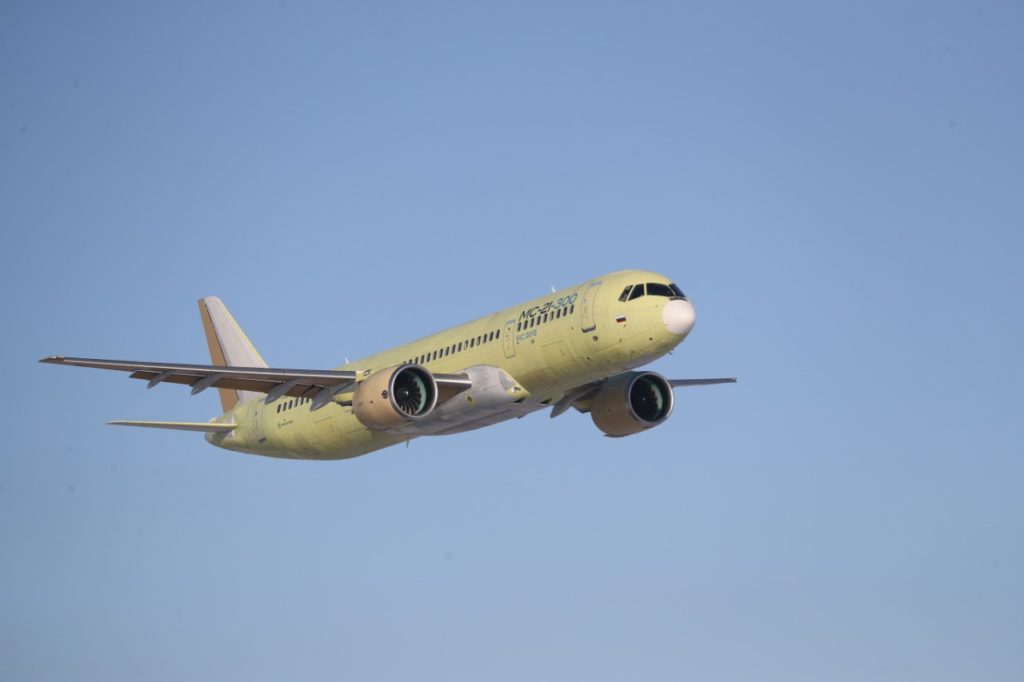

Irkut Corporation (part of Rostec’s UAC) and the Central Aerohydrodynamic Institute (TsAGI) of the “Zhukovsky Institute” National Research Center have successfully completed the crucial stage of static tests for the wingbox of MC-21 aircraft made of Russian composite polymer materials. The test results showed that the actual strength properties of the product matched the calculated values.
Aviation safety standards require that the wingbox has to withstand the design load during static tests. To find out the maximum bearing capacity of the wing, the wingbox was loaded to destruction, according to the plan. The destruction occurred at the TsAGI pavilion and under the load exceeding the calculated value set according to the existing aviation safety rules – 1.5 times higher than the maximum possible load in operation.
The planned destruction of the wingbox occurred in intentionally created specific climate conditions: in order to take into account, the effect of high temperature on the strength capacity of the composite material, part of the wing structure was heated.
“The successful trial confirmed that the methods for calculating the strength capacity of composite products are correct. The experiments prove that the wingbox, the main bearing part of the wing, ensures stability and safety in the most adverse flight conditions. All planes under construction will be equipped with wings made of domestic materials,” said Yuri Slyusar, UAC General Director.
“Developing civil aviation requires harmonized cooperation of science and industry. We created an advanced experimental facility at TsAGI and it is run by a team of top professionals. Thus, we can run a great number of trials under the MC-21 innovation program in cooperation with Irkut Corporation staff,” said Kirill Sypalo, TsAGI General Director, correspondent member of the Russian Academy of Sciences.
The wingbox is made by JSC AeroKompozit, a subsidiary of Irkut Corporation (part of Rostec’s UAC).
The domestic composite materials for the load-bearing wing structure were developed with the participation of scientists from Moscow State University and Rosatom, as well as aviation industry experts. MC-21-300 aircraft with the wing made of Russian composite materials made its maiden flight on December 25, 2021. Prior to the flight, it went through a large set of ground tests showing that domestic composite materials matched the criteria set for aircraft components.

















